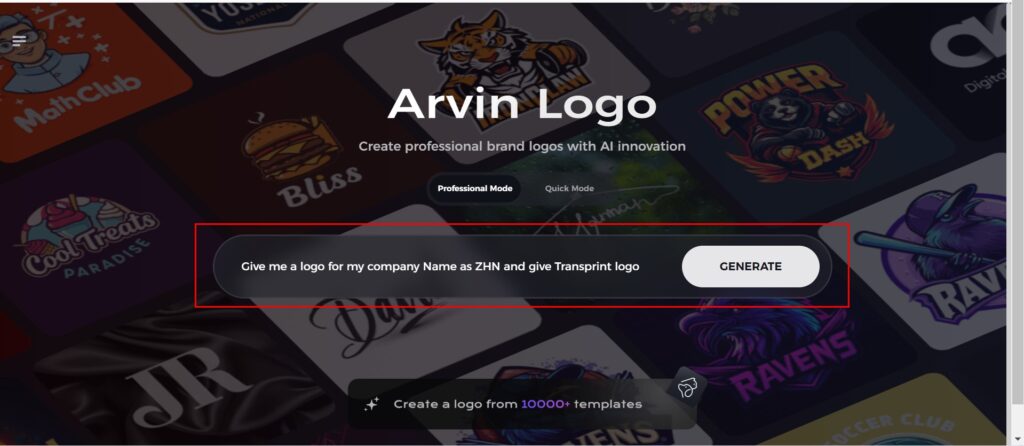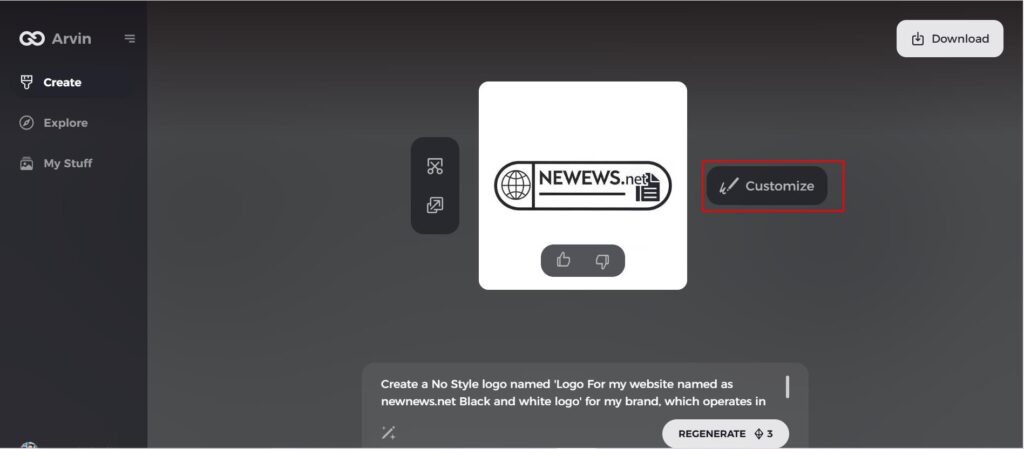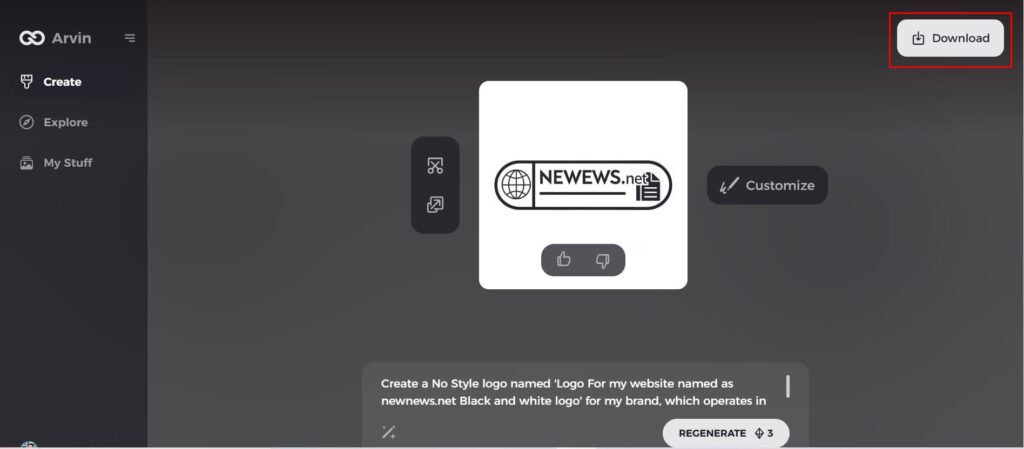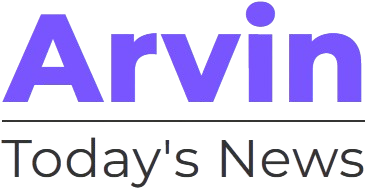Graphic design remains to be a powerful tool that merges art with both information and communication and has a great importance in determining how people conceive and interpret concepts. The designers, through the progression through the styles, appear to adapt to certain messages and their target audience. It would thus be basic to understand the styles in order to create projects capable of appealing to the emotions and visually. This article also discusses the major trends of graphic design styles for 2025 and describes their features and uses.
Part 1: What Are Graphic Design Styles?
Graphic design styles therefore refer to the way, through which graphic design sees, conceptualizes and achieves design projects. Hues, types, positioning, and surfaces create certain emotions or subject related to any product or service.
The Role of Styles in Visual Communication
Design styles are one of the most effective ways to convey a message. A selected style can set the tone, draw attention, and be aligned with brand identity. For example, minimalistic designs talk of sophistication, while retro designs talk of nostalgia.
Why Understanding Design Styles is Essential for Modern Creatives
Versatility is the key in a competitive design landscape. Mastering various styles empowers creative to modify their work to diverse audiences, enhance visual storytelling, and stay relevant in a constantly evolving industry.
Part 2: Popular Graphic Design Styles
Simplicity is the ultimate form of elegance, and that trend will probably not change anytime soon, for 2025 at least. It is synonymous with simplicity and does not contain intrusive details, cool logo color and much space and the best is less is more. In doing that, it shifts the focus towards content and functionality of the design while minimizing aesthetics as an issue. Apple logo, stunning modern web-stores – those are the most popular examples of the minimal style.
Retro and Vintage Design
Retro and vintage are fresh but classic style in design that is characterized by low contrasting colors, supersized fonts, and rough images. This style evokes memories and therefore it is effective in those projects that an aim to evoke an emotional response in the target market. Retro style ideas incorporate features of old but related styles like the 1950s advertisement posters to product branding that has a magical old style artistic feel. This style is usually used popular packaging for artisanal goods and promotions for events because they are familiar and genuine.
Abstract Design
Abstract design thrives on breaking the mold; this emphasizes forms, colors, and shapes over literal representation. The art form gives designers the room to experiment and express themselves without being bound by reality. This style is best suited for album covers and modern art, where one’s aim is to induce emotion and provoke thought. Color and dynamic layouts are best used in abstract design because of a very individualistic visual language that screams creativity and innovation.
Flat Design
Flat design’s simple, two-dimensional look is a staple in UI/UX design. It is not fuzzy and gradient based but uses bright color schemes along with clean line works and literally simple layouts. Because of its usability, it is widely used for website and mobile application designs. For example, the Google’s Material Design follows elements of flat design, which show its future stability in the digital environment.
Typography-Focused Design
Typography concentrated design demonstrates the power of words as an image. This is done by changing with different typography, layout and the spaces between the types. On one hand, typography-oriented design can be deliberately readable to a point, and that creative expression can be artful. Most of the posters, magazine covers, and major campaign use typography to convey a loud statement. Typography-focused designs when done successfully will elicit emotions, guide the viewer’s eye over the piece, and create a lasting impression.
Illustrative Design
Trademark design focuses on illustration made by hand or computer art. This style is quite versatile and allows the designer to draw sort of surrealistic, story-telling images. This is well suitable in areas such as children’s book, animated movies, as well as branding. When it comes to picking images that require some imagination like for a humorous logo of a startup, or, on the contrary, when choosing a plot for an ad, this style is very close to dreaming.
Grunge Design
Grunge design incorporates a raw, edgy look that stems from punk rock and the culture of the city. A grunge design is defined by distressed textures, chaotic layouts, and unusual fonts. It’s very typical of youth-oriented branding or music posters. It’s one of the favorites of projects that want to break with norms and exude a rebellious spirit.
Futuristic and Sci-Fi Design
Futuristic design is the style of the impact of technology and innovation and can be recognized in such design features as white and shiny and metallic frames, and techno polymer. They post is among the favorites in sci-fi movies’ poster design as well as branding technology companies. It is perfect for projects that are now looking to be full of energy and are looking forward to the future of design.
Part 3: How to Choose the Right Graphic Design Style
The ideal graphic design styles are to make your visuals capture your audience’s attention and work effectively toward their intended purposes. Below is a step-by-step guide on informed decisions to be made along with factors, inspiring examples, and common pitfalls that can be avoided.
Understanding the Key Factors
Audience Insights
Knowing your audience is the basis of choosing the right design style. Every demographic resonates with certain aesthetics. For instance, a younger audience would love bold, vibrant, and unconventional designs, whereas professionals lean towards minimalist, clean visuals.
Clarifying the Purpose
Your design’s goal should determine its visual direction. For example, a promotional flyer calls for a bold and energetic style, while an educational info graphic will benefit from clean, logical layouts that enhance clarity and comprehension.
Medium Considerations
The choice of style is heavily influenced by the platform or format where your design will be appearing. A billboard design will require large, bold elements for visibility, while posts on social media can utilize subtle animations or interestingly interactive elements.
Inspiring Case Studies
Coca-Cola: Vintage Retro Design
Coca-Cola’s consistent use of retro typography and its iconic red-and-white palette is a true testament to the power of timeless design. This fosters emotional connections with its audience and reinforces brand identity across generations.
Spotify Wrapped: Modern and Vibrant
Spotify Wrapped is a shining example of using vibrant colors and geometric patterns to engage its audience. Its visually compelling and shareable designs create buzz and build brand loyalty among tech-savvy users.
Common Mistakes to Avoid
When choosing a graphic design styles, even the smallest mistakes can reduce the overall impact of your images. Avoiding these common errors assures that your designs will make an impact and strike home with your target audience.
1. Ignoring Your Target Audience
Understanding your audience is the foundation of effective design. Failing to tailor your style to their preferences or expectations can alienate viewers and make your message less impactful. For example, using playful, cartoonish illustrations in a corporate financial report might seem unprofessional and harm credibility. Always consider the audience’s demographics, interests, and cultural context when choosing a design style.
2. Overcomplicating the Design
Simplicity is often the secret to great design. Trying to overload a project with too many elements, colors, or mismatched styles is what can make it look confusing and dilute your message. For example, a busy website homepage cluttered with clashing typography, too many animations, and an overcrowded layout is frustrating to users and may drive them away. Instead, focus on clarity and cohesion by focusing on only the essential elements that will help your design succeed.
3. Ignoring current trends
Staying up to date with design trends ensures your visuals appear modern and relevant. Ignoring these trends can make your designs seem outdated or disconnected from contemporary tastes. However, blindly following every trend without aligning it with your brand identity can result in a lack of authenticity. Strive to balance trendy elements with timeless aspects to maintain a professional and consistent style.
4. Overlooking Accessibility
A good design is one that can be easily accessed by anyone regardless of his or her capabilities. It is important not to disregard accessibility standards like adequate contrast, readable font, and compatibility with a screen reader, which would then bar some users and render your design less effective. For example, pastel-colored text on a light background might be trendy but difficult for those who are visually impaired. Include every kind of user in your designs to make it universal.
5. Failure to Adapt to the Medium
The design styles must be adopted to fit the medium where the designs are going to appear. Very detailed graphics with fine lines may lose definition when size is reduced to fit in mobile screens or small items like business cards. Be sure to test your designs on different mediums to maintain their impact and quality.
Part 4: Make Logos with Arvin AI for Your Graphic Designs
In brief, creating standout logos that portray your brand identity is something nobody finds easy, especially the ones with little design expertise. Arvin AI now changes all that by deploying the most advanced artificial intelligence to ease the process. Its interface is intuitive to the simple needs of inexperienced designers and to the precision-minded professional.
Key Features of Arvin AI for Logo Creation
AI-Powered Logo Design
Arvin AI uses advanced algorithms to generate unique and innovative logo concepts. By analyzing your input, such as brand name and industry, it creates tailored designs that reflect your brand’s essence.
Style Recognition
The tool allows you to upload brand guidelines or visual references. Based on these, Arvin AI suggests suitable logo styles, ensuring consistency with your brand identity.
Customizable Templates
You have access to a huge collection of templates, categorized according to industry and theme. The templates serve as a good starting point and can be modified to fit your imagination.
Intuitive Editing Tools
At Arvin AI, they have designed a comfortable and friendly way of editing logos. With it, you can make easy changes to the color, font, layout, and other features, it is ideal for new employees and yet can be profound for experienced users.
Steps to Use Arvin AI for making Logo
Step 1: Create an account and log in on Arvin AI
Visit the website of Arvin AI, open an account, and log in for the logo design feature.

Step 2: Input your brand information and preferences
Input your brand name, slogan, and industry. Specify all your design preferences, which may include font styles or images themes.

Step 3: Pic your industry:
Now select your industry related to your niche. This will help the AI generate logo styles and types that better suit your preferences.

Step 4: Select Style:
Now select a style which you would like and continue. This will serve as inspiration to create your preferred logo.

Step 5: Design Personalize through the tools of Arvin AI
After Arvin AI gives create your logo, you can customize those logos with the tools that have elements such as font style, layout, and the positioning of symbols. Experiment on different designs until you like what you see.

Step 6: Save and download the final logo
Preview the finished logo and save it in a high-resolution format for both print and digital uses.

Why Arvin AI is a Game-Changer for Logo Design
Traditionally, it takes more time and thought to generate a good logo since creating the perfect design of a company is something difficult to attain. With this in mind, Arvin AI made a very cost-effective efficient solution with minimal loss to quality that will suit the purpose and satisfy the customers.
Saves Time and Effort with Automated Design Processes
One of the main attractions of Arvin AI is its automation of the logo-making process. The platform uses advanced algorithms to eliminate the long brainstorming sessions and manual adjustments that are usually involved in the process. The platform guides users through a streamlined workflow, enabling them to create a logo in just minutes.
Professional-Quality Logos at a Fraction of the Cost
A professional designer is one of the most expensive elements in the logo design process-often hundreds or thousands of dollars. Arvin AI democratizes the logo designing process by delivering exceptional quality at a fraction of the price. The tool also provides high-resolution outputs, making it suitable for both digital and print branding needs.
Ideal for Businesses, Freelancers, and Creatives
Arvin AI is designed for a wide range of users. Small businesses and startups can quickly create logos that represent their brand identity without huge costs. Freelancers and independent creators benefit from the tool’s ability to generate multiple logo variations in short time, enabling them to experiment and refine their ideas.
Part 5: Trends and Evolution in Graphic Design Styles
Technology has influenced the way graphic design styles transforms mainly in logo design. Arvin AI is the instrument showing that artificial intelligence is free from the design process while giving birth to new opportunities. The trends are defined by the social media platforms that exist in the contemporary business universe. Given the mainly visual nature of such social media networks as Instagram and TikTok, it is these platforms that traditionally set the stage for the most visually appealing and viral design trends.
Emerging Trends in Graphic Design
Design is a dynamic environment that is continually changing. There will always be new trends, which are kind of experimentation as far as design is concerned. Such trend include the use of 3D design, this adds depth and reality to visuals than making them realistic. Motion graphics is another popular trend today, particularly for digital media since kinetic typography receives a lot of attention. The other new concept is the augmented reality that comes with this, and users are free to engage designs in totally different manners. The advance of AR-progressive logos that appear to get to life when seen via smartphone is further reported to have been shifted to by brands. These provide really effective experience that would be really incredible in the true sense of the term.
Predictions for Future Styles and Their Applications
Personalization will look forward to being at the center of all graphic design. Tools, such as Arvin AI, are already on the trend, allowing users to have designs that fit the respective audiences and purposes. Expect minimalist yet interactive designs- simplicity with engaging features of micro-animations. Second, sustainability will impact aesthetic decisions in a direction toward values of earthiness by tone, texture, and form, as well as toward eco-conscious values. Inevitably, these evolving trends will redefine how a brand communicates visually in this rapidly digital-first world.
Conclusion
Arvin AI represents one of the breakthroughs in logo design transformations. By saving time, reducing costs, and offering professional quality outcomes, it caters to a wide range of users from business to independent creative. In addition to trends in shifting graphic design styles, Arvin AI empowers users to be ready for all the changes the logo making for your visual designs can provide. Whether it’s creating a logo for a new startup or updating an existing brand, Arvin AI is the ultimate partner in modern design needs.
FAQs About Graphic Design Styles
What’s the importance of knowing about graphic design styles?
Graphic design styles are comprehended as creating visuals that benefit you, your audiences, and meet the purpose. Every style has a specific meaning and it is imperative to put the right design in one concerning the identity of the brand and what the brand wants to achieve.
What is the best graphic design style for my project?
Finally, the style will depend on such factors as a target audience, a sector, and the goals set for a certain project. The way to locate a style that serves the branding purpose is by examining the competitors and some tools like Arvin AI.
Does Arvin AI have the capability to create designs in various graphic design styles?
Yes, Arvin AI supports various styles of graphic design styles. It has templates with customization options for various types of designs from minimalist to bold and dynamic.
What are the supporting tools for learning and implementing graphic design styles?
Besides Arvin AI, Adobe Creative Suite and Canva will do just fine exploring various styles in graphic design and helping implement them. But Arvin AI is best tool for logo designs with easy and simple methods. It also provides several features for boosting the process of design creativity.


